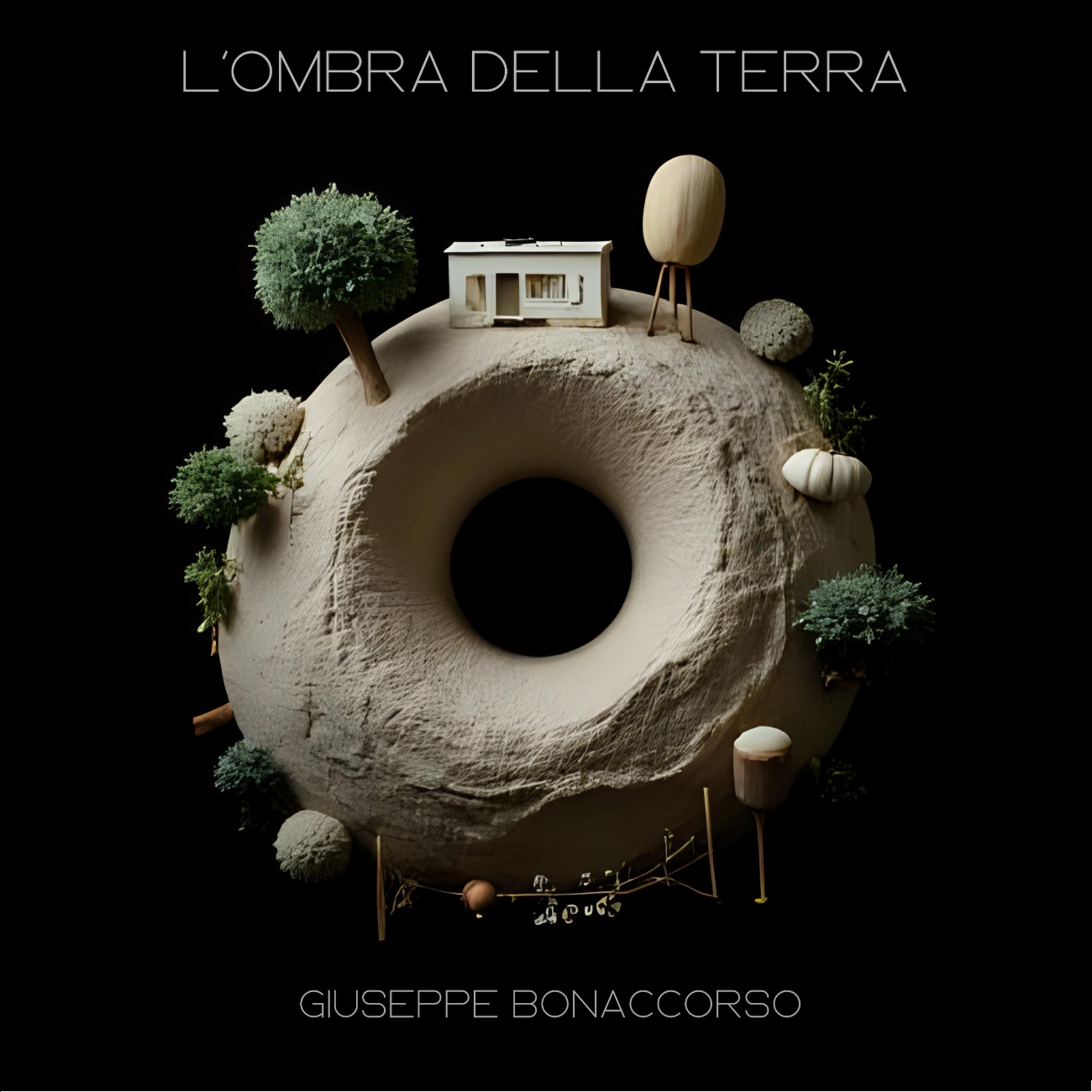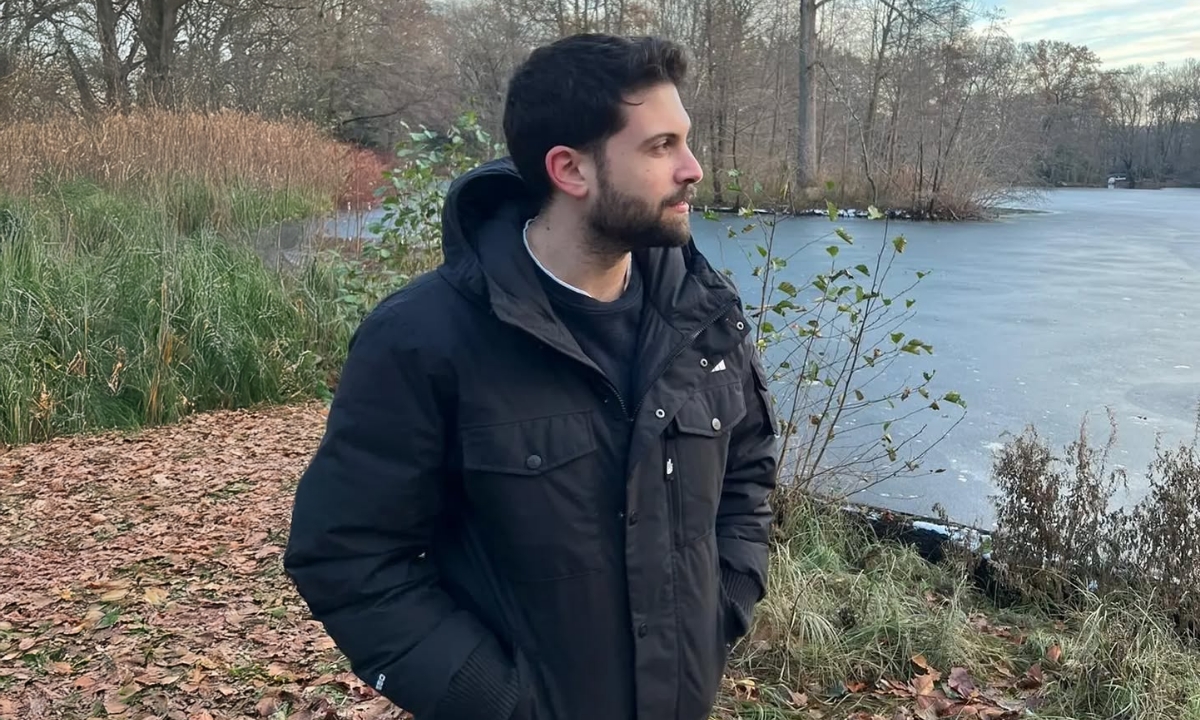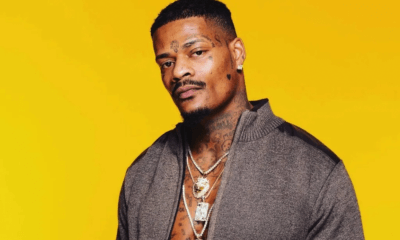Entertainment
Disintegration C.E. Aims to Fuel What Eric Robertson Calls Dance Music’s Creative Alchemy
Published
4 months agoon

After spending a quarter-century creating music largely in the shadows, Denver-based electronic artist Eric Robertson stepped into the spotlight under his stage name Disintegration C.E. in late 2024. His emergence isn’t just about getting his name out there—it’s about joining what he sees as dance music’s endless creative conversation that spans multiple directions at once.
“There was a point about ten years ago in my mid thirties that I kept asking myself.. why are you even still doing this if you aren’t going to share with…often literally, anyone?” Robertson explained. “I couldn’t answer that at first..but I kept asking myself because I was continued to feel compelled to create DJ mixes compulsively almost monthly. Then I realized it was really my way of journaling… sort of cataloguing the things I experience…for myself.”
It’s the kind of artistic doubt most creatives know well. Robertson’s realization that his monthly mix creation was essentially a form of musical journaling—a way to catalog his experiences—became the turning point for his eventual public emergence.
Like many artists, Robertson’s path wasn’t linear. He started out in rock music, wielding a rhythm guitar and lending backup vocals to various bands during his younger years. But his love for danceable music actually goes back even further—he remembers spending his own money in third grade to buy a C&C Music Factory cassette tape. Everything changed when he stumbled into the rave scene at 17—a discovery that would reshape his entire trajectory.

During his time at Pitzer College in Southern California, Robertson and a tight-knit group of friends started DJing together, taking turns opening for each other and throwing weekly gatherings at a converted campus coffee shop called “The Grove House.” It was the kind of grassroots musical community that many artists look back on fondly—intimate, collaborative, and driven purely by passion.
During this formative period, Robertson was exposed to influential artists including Donald Glaude, DJ Dan, Green Velvet, and Groove Armada, along with The Tidy Boys, Jon Bishop, John Kelly, MJ Cole, and Artful Dodger. However, his palette extends far beyond electronic music, incorporating influences from UK garage of the late 1990s and early 2000s, 80s new wave, indie rock, and contemporary trap and drill.
Robertson’s approach to his sound reflects this broader philosophy. Rather than getting boxed into rigid genre definitions, he describes his music as “Techno-Influenced House and House-influenced techno”—which really captures his belief in electronic music’s fluid, conversational nature. He’s all for dance music’s tradition of sampling, referencing, and sometimes completely flipping elements from other tracks. To him, that’s the collaborative spirit that spans time and geography.

His creative process is notably methodical. Robertson typically develops tracks in thematic clusters of three to five songs—what he privately considers EPs, even though he releases most as standalone singles. There’s something almost secretive about this approach, as if he’s creating these cohesive musical statements that only he fully understands.
His catalog includes standout tracks such as “House of the Acid Moon,” “Atlantic Brothers,” “Track for Luigi,” “Sad No More,” and “Valjean (Pay-A-Debt).” Most recently, he released “Weekend Holding” on May 21, which is also getting a remix treatment from Philippines-based producer Ricky Alfian. This followed earlier May releases “The Collapse” and “Hypnautik.”
When he talks about his influences, Robertson gets pretty specific about what draws him to certain artists. Green Velvet earns praise for his “use of mocking intellectualism,” while Nic Fanciulli impresses him with his ability to build “driving energy paired with melodic hooks.” He speaks of Vintage Culture with real admiration—someone he considers more of a contemporary—for maintaining a recognizable tech house foundation while fearlessly exploring different subgenres.

Danny Tenaglia’s mix CD “Mix This Pussy” holds special significance for Robertson. He credits it as the original spark for both his DJing and eventual move into original production. Those kinds of specific, personal musical moments can shape an artist’s entire path.
Looking ahead, Robertson is putting the finishing touches on a new EP titled “Together a Poem,” which he describes as “a tribute to the diverse elements of tech house.” His next single, “A Heart With Holes,” drops on May 29, 2025, and will be part of this upcoming project. For those wanting to dive into his existing catalog, he’s got quite a bit to swim through on Spotify, Apple Music and SoundCloud. Don’t expect to find him on social media though—it’s just not his thing.
Through the unique tech-house voicing of Disintegration C.E., Eric Robertson hopes to inspire what he sees as dance music’s endless creative potential—a constantly evolving dialogue between artists that pushes the genre in multiple directions. After 25 years of creating music primarily for himself, he’s finally ready to see where that conversation leads him—and more importantly, where it might inspire the next generation of artists to take electronic music.
This article contains branded content provided by a third party. The views expressed in this article are solely those of the content creator or sponsor and do not necessarily reflect the opinions or editorial stance of Popular Hustle.

You may like
-


Magdalena Bay Returns with Surprise Double Single “Second Sleep” and “Star Eyes”
-


Giuseppe Bonaccorso Unveils Experimental Epic ‘L’Ombra della Terra’
-


A Conversation with Matan Hamish About Music, Medicine, and Making It Through
-


Enzo Carpanetti Proves You Can See the World While Building Your Career
-


iurisEkero Proves Pop Music Doesn’t Have to Be Loud to Be Good
-


Alain Mékani Confronts Success and Solitude in New Single ‘Quiet’
Entertainment
Magdalena Bay Returns with Surprise Double Single “Second Sleep” and “Star Eyes”
Published
2 days agoon
September 29, 2025
There’s something quietly rebellious about dropping new music without warning on a random Friday, especially when you’re fresh off supporting Billie Eilish at the O2 Arena and have just wrapped two sold-out cemetery shows over the weekend. But that’s exactly what Magdalena Bay did, releasing “Second Sleep / Star Eyes“—their first tracks since last year’s Imaginal Disk sent critics scrambling for superlatives.
The timing feels deliberate rather than impulsive. Mica Tenenbaum and Matthew Lewin have spent months on the road, watching audiences connect with their progressive-pop experiments night after night. This past weekend at Hollywood Forever Cemetery—where LA’s music obsessives gather among tombstones for some of the city’s most surreal concert experiences—they gave fans something new to chew on.
“Second Sleep” arrives as the functional A-side, complete with a music video directed by Amalia Irons. The track unfolds like a controlled explosion across five minutes, starting with deceptive calm before drum fills and synthesizer squeals take over. There’s an unexpected left turn into funky R&B during a finger-snap breakdown that somehow makes perfect sense within the chaos. It’s restless music for restless minds.
The companion piece, “Star Eyes,” operates on different frequencies entirely. Where “Second Sleep” builds tension through disorder, this one floats through theatrical jazz-influenced dreamscapes. When the beat finally drops and symphonic strings sweep through, the emotional payoff feels earned rather than manufactured.

According to the duo, these tracks emerged naturally from the same creative headspace that produced Imaginal Disk. “Second Sleep” and “Star Eyes” are two songs we made around the end of Imaginal Disk—both a sort of spiritual successor to the album’s mood and emotional arc,” they explained. “We like how they complement each other, so here they are as a pair.”
That connection runs deeper than chronology. The band has been teasing an album movie to mark Imaginal Disk‘s one-year anniversary, with director Amanda Kramer collaborating while Tenenbaum and Lewin handle writing and editing. Anyone who caught the narrative threads in their videos for “Death & Romance,” “Image,” and “That’s My Floor”—or their Jimmy Kimmel Live! performance—knows these aren’t artists who treat visuals as afterthoughts.
Their trajectory keeps climbing. Following this weekend’s cemetery performances, they’ll return to the UK and Europe in early 2026, including their largest London show yet at O2 Academy Brixton. It’s quite the leap from their Miami beginnings and early LA club shows, though they’ve maintained the same DIY sensibility that made their early-2000s internet-inspired visuals feel both nostalgic and alien.
The duo initially caught attention through TikTok videos demystifying music industry mechanics, but these new tracks prove they’re more interested in creating mysteries than solving them. Their blend of progressive rock, shoegaze, and disco continues evolving into something increasingly difficult to pin down—which might be the point.
What’s compelling about “Second Sleep” and “Star Eyes” isn’t just that they extend Imaginal Disk‘s sonic universe. It’s that they arrived unannounced, like messages from artists who understand that sometimes the best way to maintain momentum is to disrupt it entirely. This past weekend, when they took the stage among the headstones, these songs weren’t surprises anymore. They’d already become part of the mythology.
Entertainment
Giuseppe Bonaccorso Unveils Experimental Epic ‘L’Ombra della Terra’
Published
1 week agoon
September 21, 2025
Giuseppe Bonaccorso isn’t interested in making music you can half-listen to while scrolling your phone. His latest single, “L’Ombra della Terra” (The Shadow of the Earth), asks for your full attention across its four minutes and eleven seconds—this isn’t background music by any stretch.
Released September 1st, this track comes on the heels of “Playground in Gaza,” which already had critics taking notice of the Italian composer’s refusal to play by anyone else’s rules. But where that previous single sparked conversations, “L’Ombra della Terra” feels like Giuseppe Bonaccorso throwing down a gauntlet. The track now has an official music video on YouTube that adds another visual layer to the already complex sonic experience.
The song opens with this slow-building atmosphere that’s almost cinematic—layers of synthesizers and ambient sounds that pull you in before a driving rhythm kicks everything into gear. What’s striking is Bonaccorso’s vocal approach. He’s not really singing in any traditional sense; it’s more like he’s delivering poetry over this shifting musical backdrop. Distorted guitars weave through the mix, keeping things grounded even when the experimental elements threaten to float away entirely.

The Italian lyrics paint a vivid picture that’s both mystical and rebellious. Bonaccorso writes about shamans with glass skin, eyes being dragged far away, and a world that’s fallen asleep and turned upside down. There’s imagery of prayers dissolving like smoke rings, references to automatons with maps and compasses trying to figure out the world’s geometry. The narrative voice addresses a father figure, talking about sin and debt, invoking Charon (the mythological ferryman) and thirty pieces of silver. The whole thing culminates with the narrator seeing their reflection in Earth’s shadow—which gives the track its title.
What makes these lyrics fascinating is how they blend classical mythology with modern disillusionment. You’ve got ancient references sitting next to images of mechanical beings, creating this temporal collision that feels both timeless and urgently contemporary. The recurring theme seems to be about breaking free from imposed guilt and spiritual debt, rejecting the idea that we owe something to powers that claim authority over us.
This release makes more sense when you know Bonaccorso’s background. The guy’s not just a musician—he’s a published poet with actual awards, started out doing ceramic sculpture as a kid in Caltagirone (a Sicilian town known for its artists), and has studied both computer science and philosophy. That multidisciplinary approach shows up in how layered his compositions are.
What’s refreshing about Giuseppe Bonaccorso is his complete disinterest in chasing streaming numbers or viral moments. He’s been releasing music since July 2024, starting with “Roaming in a wood,” then “On a solitary beach” in August. His interpretation of “Ave Maria” did pull in over 50,000 Spotify streams, which shows people are paying attention, but you get the sense he’d be making this music regardless.
“L’Ombra della Terra” isn’t background music for your workout playlist. It’s the kind of track that asks you to sit down, put on decent headphones, and actually listen. In an era where most music feels designed to be consumed and forgotten, there’s something almost defiant about creating something this deliberately challenging.
The single and its official music video are available worldwide on Spotify, Apple Music, and YouTube.
For more from Giuseppe Bonaccorso, visit his website, follow him on X, or check out his Instagram.
Entertainment
A Conversation with Matan Hamish About Music, Medicine, and Making It Through
Published
2 weeks agoon
September 15, 2025
Matan Hamish begins by admitting that pausing his creative process nearly destroyed him. The Tel Aviv–based songwriter-producer set music aside during medical school—a practical decision that made sense until it didn’t. When a personal crisis hit a few months ago, he didn’t reach for his medical training; he returned to what he’d left behind: making music.
“Music helped me rise up from the darkest of places in my life,” he says, and you can hear that darkness threaded through tracks like “Tunnel Vision,” with its drowning imagery and themes of exhaustion, or “Hallucinating,” which captures the paranoia of being gaslit through pulsing electronic production.
What’s fascinating about Hamish isn’t just the emotional weight of his work—it’s how he refuses to stay in one lane. One track pairs warm country guitars with vulnerable vocals. The next builds into dark house territory. Then there’s a piano ballad with ethereal strings and pads. Each song serves its own emotional purpose, and Matan Hamish seems perfectly comfortable letting the message dictate the genre rather than the other way around.
How did you first get into music and songwriting?
I started getting into music and writing back when I was a teenager listening to metal bands, as a way to express myself. As I grew up, I opened up to many more genres of music and I find myself enjoying writing in any genre that fits my current mood and the message the song is trying to convey. After a long hiatus due to studying medicine and working as a doctor, I got back to writing music to help me get through a deeply personal recent struggle.
Your catalog jumps from country-influenced tracks to dark electronic production. How do you approach such different genres?
Big, melodic, a bit dramatic—like me—and always catchy. That’s the thread running through everything, regardless of genre. Whether it’s “Homeland” with its warm guitars and touch of twang, or “Mono to Stereo” with its house/EDM style, I let the emotion and message guide the production choices. The genre becomes a tool rather than a limitation.
Can you walk us through some of your tracks and what they represent?
“Oxygen” is this beautiful piano arrangement with ethereal pads—it’s about finding the strength to let go of lost love and relearn how to breathe on your own. “Hallucinating” goes completely different with its electronic build and hard-hitting crescendo. That one captures what it feels like when someone you love makes you question your own reality. “Tunnel Vision” leans more rock, using drowning imagery to express holding on too long and that painful relief when you finally let go.
You handle everything from composition to production but bring in vocalists. Why that approach?
Singing was never one of my strong suits—luckily for everyone’s ears! But honestly, I love directing different vocalists and seeing how they interpret the emotions I’ve written. I write, compose, arrange, and produce everything, then work with various singers to bring each song to life. It keeps things fresh and lets each track have its own identity.
Dream collaborations?
Christina Aguilera, Sam Carter, Anyma, Max Martin. Pretty varied list, right? But that’s the point.
What do you hope listeners take away from your music?
A home. A voice they were looking for and still haven’t found in other songs. I want people to feel less alone in whatever they’re going through.
What’s next for you?
I’m reworking some of my songs with extremely talented producers right now. Great things to come—bigger and better productions. I’m also looking to connect with publishers and managers who see the potential in getting these songs recorded by artists worldwide.
There’s something refreshing about an artist who doesn’t apologize for being “a bit dramatic.” Matan Hamish wears his influences openly—from teenage metal to contemporary pop production—without trying to smooth out the contradictions. His cat Chvostek makes an appearance in his profile photo, and somehow that detail fits perfectly with someone who balances pediatric medicine by day with late-night production sessions.
The range in his catalog could feel scattered in less capable hands, but Matan Hamish’s emotional honesty acts as connective tissue. Whether he’s crafting a country-tinged meditation on isolation or building an electronic anthem about mixed signals, there’s an authenticity that cuts through. These aren’t exercises in genre-hopping; they’re different languages for different kinds of pain and healing. And maybe that’s what happens when you come back to music not for career advancement but for survival—you stop worrying about staying in your lane and start saying what needs to be said, however it needs to be said.
Check out Matan’s work at his SoundCloud, listen to his curated best-of playlist, or follow him on Instagram. For inquiries: matanhamish2@gmail.com



Magdalena Bay Returns with Surprise Double Single “Second Sleep” and “Star Eyes”

Giuseppe Bonaccorso Unveils Experimental Epic ‘L’Ombra della Terra’

A Conversation with Matan Hamish About Music, Medicine, and Making It Through

Enzo Carpanetti Proves You Can See the World While Building Your Career

iurisEkero Proves Pop Music Doesn’t Have to Be Loud to Be Good

Alain Mékani Confronts Success and Solitude in New Single ‘Quiet’

Siren Built Her Entire Sound in Secret and Now She’s Ready to Surface

JJ Tyson Proves You Can Make Metal Albums and Worship Music Without Picking Sides

Rising Artist Turo Rose Talks Vulnerability, Fort Worth, and Finding His Voice

From $300-a-Month Seamstress to Tang Heritage Luxury Icon—The Rise of Hua Ziyan

Daniel Hartnett Is Making Hip-Hop Beats More Accessible Than Ever

From Playing Small to Reigning Supreme: How Melody Sheard Empowers Single Women

Vienna’s Elite Gather for ‘Spy Capital 2’ Red Carpet Premiere

Media Executive Barrett Dungy Goes Big with One Culture Media Group Launch

Selene Makes Her Industry Debut with Mythology-Inspired Album ‘SELENE’

Jason Luv Dominates Charts While Inspiring New Wave of Multi Career Artists

Harley West | Inside the Mind of a Social Media Star on the Rise

Raw Fishing | Franklin Seeber, Known As “Raww Fishing” Youtuber Story

Jordana Lajoie Transforms Montreal Roots into Hollywood Success Story

A New Hollywood Icon Emerges in Madelyn Cline

Who is Isaiah Silva – The Story Behind The Music

Tefi Valenzuela Pours Her Heart into New Song About Breaking Free

G FACE Releases His New Single “All up,” and It’s Fire

Kaia Ra | Perseverance That Built a Best-Selling Author

Gearshift to Stardom: Nikhael Neil’s Revolutionary Journey in the Automotive Industry

Holly Valentine | Social Media Influencer & Star Success Story

Kate Katzman | Breaking Into Hollywood and Embracing Change

Tadgh Walsh – How This Young Entrepreneur is Making a Name for Himself

King Lil G | West Coast Hip Hop Genius Rises to Face With Ease

Thara Prashad | Singer Evolves to Yoga & Mediation Superstar

Tefi Valenzuela Pours Her Heart into New Song About Breaking Free

Kate Katzman | Breaking Into Hollywood and Embracing Change

Holly Valentine | Social Media Influencer & Star Success Story

Kaia Ra | Perseverance That Built a Best-Selling Author

Lil Ugly Baby XXX’s “Who?” – The Mixtape to Boost Your Playlist

Samuel Chewning Explains How Fitness Should Be A Personal Journey

Trending
-

 Business3 years ago
Business3 years agoJason Luv Dominates Charts While Inspiring New Wave of Multi Career Artists
-

 Entertainment2 years ago
Entertainment2 years agoHarley West | Inside the Mind of a Social Media Star on the Rise
-

 Culture3 years ago
Culture3 years agoRaw Fishing | Franklin Seeber, Known As “Raww Fishing” Youtuber Story
-

 Culture2 years ago
Culture2 years agoJordana Lajoie Transforms Montreal Roots into Hollywood Success Story
-

 Culture1 year ago
Culture1 year agoA New Hollywood Icon Emerges in Madelyn Cline
-

 Entertainment8 months ago
Entertainment8 months agoWho is Isaiah Silva – The Story Behind The Music
-

 Entertainment2 years ago
Entertainment2 years agoTefi Valenzuela Pours Her Heart into New Song About Breaking Free
-

 Culture3 years ago
Culture3 years agoG FACE Releases His New Single “All up,” and It’s Fire

